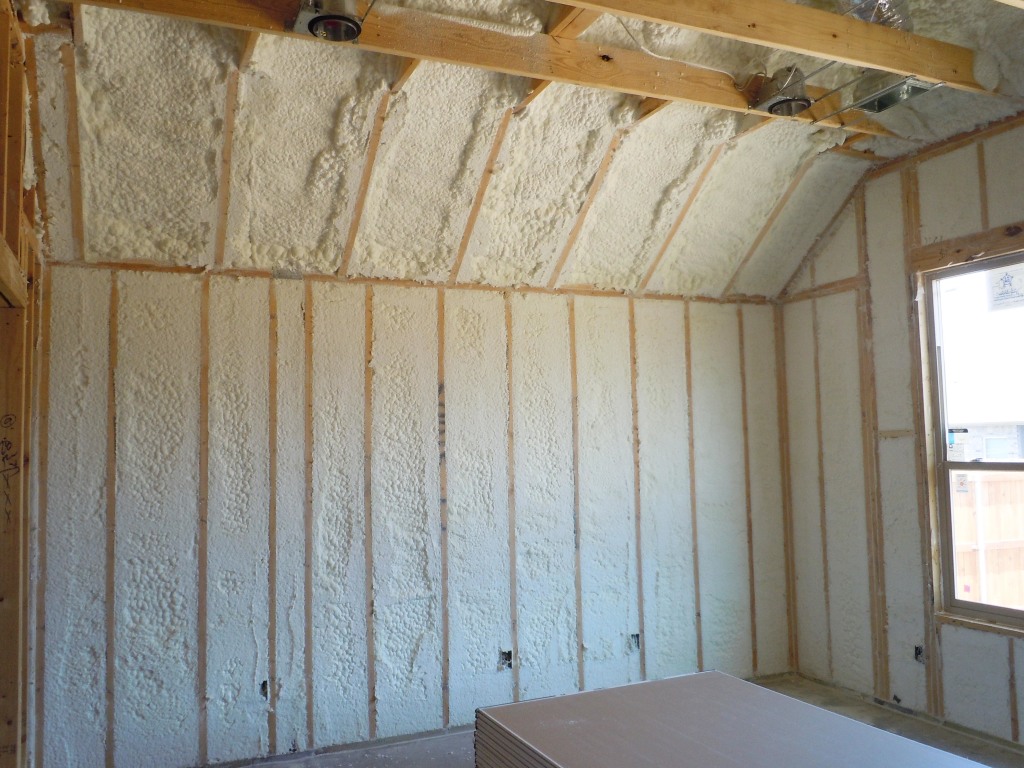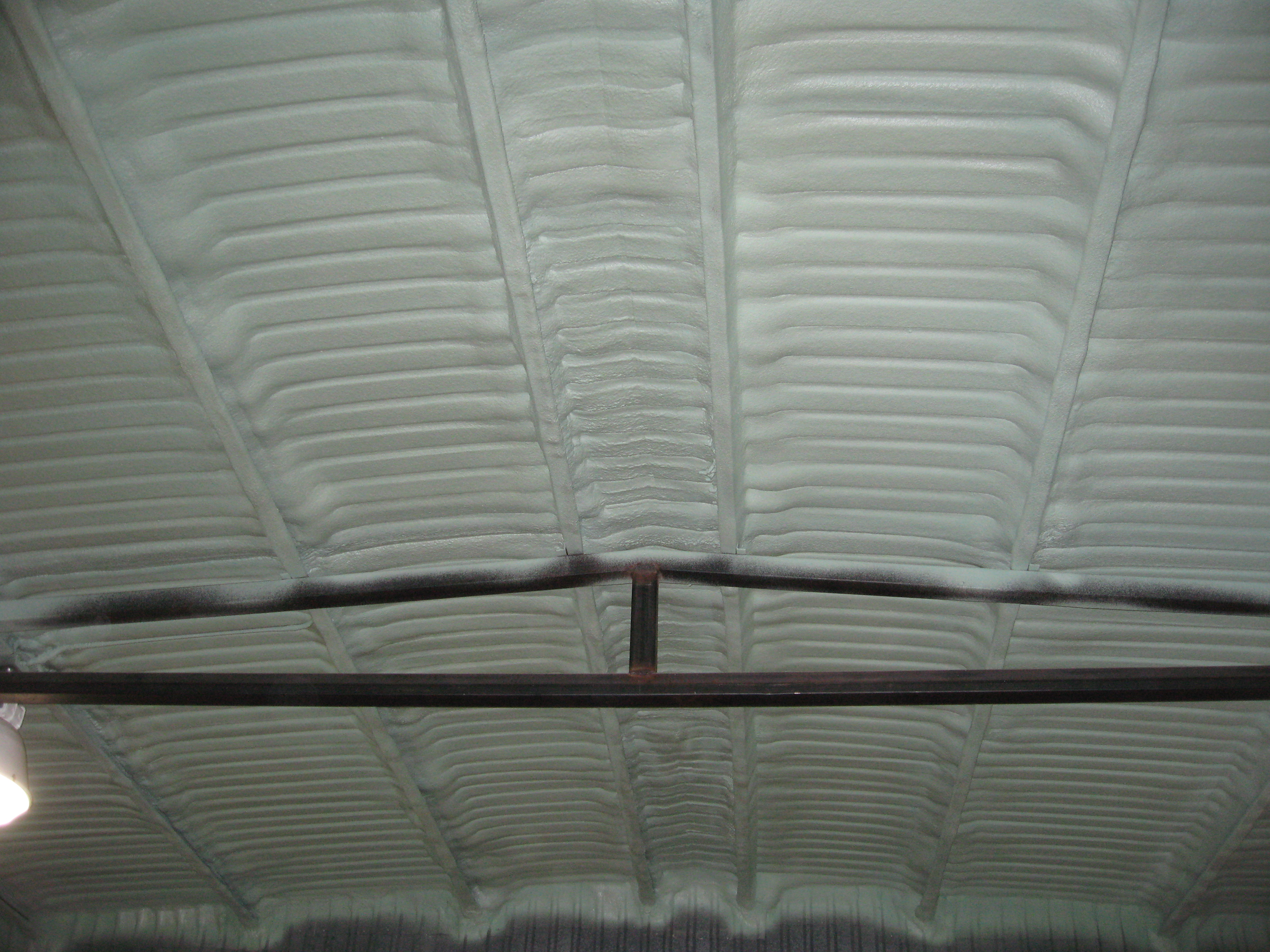In general there are two types of spray foam products: open-cell and closed-cell foam. Open-cell spray foams are also referred to as low-density, because they are typically less than one pound per cubic foot. These materials are semi-rigid, typically use water as the blowing agent, and achieve excellent sound attenuation properties. On the other hand, closed-cell foam includes an array of products used for interior and exterior insulation and roofing applications. These materials are rigid, have low vapor permeance properties and can be exposed to weather during a typical construction timeframe.
Open cell spray foam products most often use water as a blowing agent, have R-values ranging from R-3.5 to R-4.5 per inch and have excellent acoustic properties. Originally designed in Canada for use in bonus floor applications, over the past 20 years open-cell spray foam has expanded its reach into retrofit projects, custom homes, the production builder market and commercial construction. Open-cell foam is intended as cavity insulation inside exterior and interior walls, and for use in attics and crawlspaces. These products are not designed for structural use, are not flotation foams, and are not designed for contact with bulk water. If any of these concepts are design parameters, then closed-cell or medium-density foam is the product of choice.
Closed-cell foams are typically 1.7 to 3 pounds per cubic foot density and use a physical blowing agent, like 245fa, 365 or water. The density and blowing agent has a direct affect on the R-value of spray foam and current R-values range from R-5.5 to R-7 per inch, depending on the thickness of the closed-cell foam. Closed-cell foam can also increase structural support, up-lift loads for design in hurricane and tornado zones and provides a water-resistive barrier. Furthermore, closed-cell foam can come in contact with the exterior elements and can be left exposed during a construction timeframe.
While closed-cell foam is regularly used in residential construction, for use as cavity wall insulation and in attics and crawlspaces, due to its versatility closed-cell foam is becoming integral to commercial building design. The fastest growing application for closed-cell foam is exterior encapsulations. Creating complete monolithic air and vapor control systems on the outside of buildings with no seams, no joints and no tape.
In this exterior application, closed-cell spray foam can serve as a five-in-one application, providing an exterior insulation, an air barrier, a vapor retarder, a drain plane and a water resistive barrier in a single application. The foam will often be the last phase before the façade goes up on the exterior of the building. This type of application also helps limit thermal bridging through structural members by providing continuous insulation and places most of a structure’s control layers (weather barrier, moisture barrier, air barrier, thermal boundary) on the exterior of the building.
Comparing open-cell and closed-cell foam we find that both products are spray applied in a similar manner and use the same plural component proportioning equipment. They also both provide insulation and air barrier qualities in a single application. However, the differences are important to understand, especially when deciding which product is best for a specific application. While both products are spray applied, open-cell foam will expand over 100 times its liquid volume, whereas closed-cell foam will expand about 30 to 40 times its volume. This directly impacts minimum thicknesses of these products, so open-cell foam will typically be sprayed about 2½ to 3 inches minimum and closed-cell foam will be sprayed about 3/4 to 1 inch minimum. On the other hand, there are no maximum per pass thickness limits for open-cell foam but closed-cell foam, in general, is limited to approximately 2 to 3 inches per pass, and for greater total thicknesses, additional passes can be sprayed after a cool down period (refer to manufacturer data for limitations on specific products).
When choosing between open-cell and closed-cell foam, there are a few key considerations: what control layers are necessary from the use of spray foam insulation, what is the probability of exposure to bulk liquid and where is the insulation being installed – what part of the building envelope, interior or exterior, etc. At the basic level both open-cell and closed-cell foam provide insulation and air barrier qualities in a single application and for interior applications, with little risk of exposure to bulk liquid, the products are interchangeable, and either open-cell or closed-cell can be used. In most of these situations, open-cell foam will provide the necessary performance requirements and will be more cost effective. When the application is more complicated or needs additional performance, such as exterior use, low vapor permeance or contact with bulk liquid, then closed-cell foam would be the product of choice to provide additional functionality.
Both open-cell and closed-cell spray foam insulation offer excellent value as high performance foam plastic insulation materials and it is critical to understand the differences so that you can make good decisions in the field and offer your customers the best, most cost effective solutions.
If you found this post valuable and want to see more, make sure to subscribe here to keep up to date with Spray Foam Advisor.




